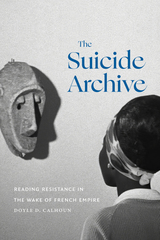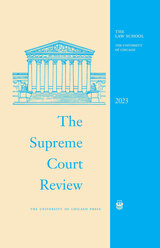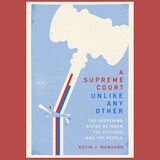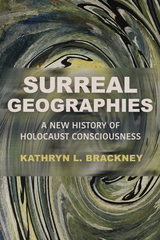
An award-winning novelist’s vibrant portrayal of the struggle to create a more unified society in medieval Egypt and how this has shaped Egypt today.
Brimming with intrigue, adventure, and romance, Al-Qata’i: Ibn Tulun’s City Without Walls tells the epic story of visionary Egyptian leader Ahmad Ibn Tulun who built Al-Qata’i (now Cairo) into a thriving multicultural empire.
The novel begins with the rediscovery of the Ibn Tulun Mosque in 1918 and recounts Ibn Tulun’s life and legacy in the ninth and tenth centuries. Bassiouney presents Ibn Tulun’s benevolent vision to unify all Egyptians in a new city, Al-Qata’i. He becomes so focused on his vision, however, that he cannot see the impact it has on his family or the fate of Egypt. When a betrayal leads to his demise, the rival Abbasid caliph threatens to regain control of Al-Qata’i. In the aftermath of Ibn Tulun’s death, his daughter Aisha emerges as a pivotal figure, bravely taking a stand against the Abbasids to preserve her life, the city, and the iconic mosque.
This contemporary Egyptian writer forces us to consider universal themes, such as diversity and equality, through both a historical and intercultural lens that enriches our understanding of these issues in our world today.
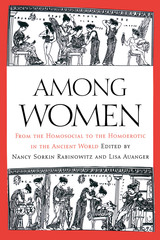
Women's and men's worlds were largely separate in ancient Mediterranean societies, and, in consequence, many women's deepest personal relationships were with other women. Yet relatively little scholarly or popular attention has focused on women's relationships in antiquity, in contrast to recent interest in the relationships between men in ancient Greece and Rome. The essays in this book seek to close this gap by exploring a wide variety of textual and archaeological evidence for women's homosocial and homoerotic relationships from prehistoric Greece to fifth-century CE Egypt.
Drawing on developments in feminist theory, gay and lesbian studies, and queer theory, as well as traditional textual and art historical methods, the contributors to this volume examine representations of women's lives with other women, their friendships, and sexual subjectivity. They present new interpretations of the evidence offered by the literary works of Sappho, Ovid, and Lucian; Bronze Age frescoes and Greek vase painting, funerary reliefs, and other artistic representations; and Egyptian legal documents.
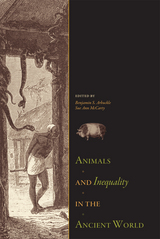
The authors provide a global range of case studies from both New and Old World archaeology—a royal Aztec dog burial, the monumental horse tombs of Central Asia, and the ceremonial macaw cages of ancient Mexico among them. They explore the complex relationships between people and animals in social, economic, political, and ritual contexts, incorporating animal remains from archaeological sites with artifacts, texts, and iconography to develop their interpretations.
Animals and Inequality in the Ancient World presents new data and interpretations that reveal the role of animals, their products, and their symbolism in structuring social inequalities in the ancient world. The volume will be of interest to archaeologists, especially zooarchaeologists, and classical scholars of pre-modern civilizations and societies.
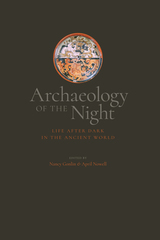
How did ancient peoples experience, view, and portray the night? What was it like to live in the past when total nocturnal darkness was the norm? Archaeology of the Night explores the archaeology, anthropology, mythology, iconography, and epigraphy of nocturnal practices and questions the dominant models of daily ancient life. A diverse team of experienced scholars uses a variety of methods and resources to reconstruct how ancient peoples navigated the night and what their associated daily—and nightly—practices were.
This collection challenges modern ideas and misconceptions regarding the night and what darkness and night symbolized in the ancient world, and it highlights the inherent research bias in favor of “daytime” archaeology. Numerous case studies from around the world (including Oman, Mesoamerica, Scandinavia, Rome, Great Zimbabwe, Indus Valley, Peru, and Cahokia) illuminate subversive, social, ritual, domestic, and work activities, such as witchcraft, ceremonies, feasting, sleeping, nocturnal agriculture, and much more. Were there artifacts particularly associated with the night? Authors investigate individuals and groups (both real and mythological) who share a special connection to nighttime life.
Reconsidering the archaeological record, Archaeology of the Night views sites, artifacts, features, and cultures from a unique perspective. This book is relevant to anthropologists and archaeologists and also to scholars of human geography, history, astronomy, sensory studies, human biology, folklore, and mythology.
Contributors: Susan Alt, Anthony F. Aveni, Jane Eva Baxter, Shadreck Chirikure, Minette Church, Jeremy D. Coltman, Margaret Conkey, Tom Dillehay, Christine C. Dixon, Zenobie Garrett, Nancy Gonlin, Kathryn Kamp, Erin Halstad McGuire, Abigail Joy Moffett, Jerry D. Moore, Smiti Nathan, April Nowell, Scott C. Smith, Glenn R. Storey, Meghan Strong, Cynthia Van Gilder, Alexei Vranich, John C. Whittaker, Rita Wright


The emergence of cities in the different regions of the ancient world presents two problems. First, in areas of common culture or at least of cultural contact, did the cities evolve independently, as phenomena of social, political, and economic growth, or did they emanate from a common center of origin? Second, how did the Greco–Roman city–state originate?
In considering these questions, Mason Hammond has limited the ancient world to the Middle and Near East, the Indus Valley, and the Mediterranean region. He takes geographical and economic factors into account as he treats the cities historically by areas, from their first development in Sumeraround 3200 B.C, to the end of the ancient world in the middle of the sixth century A.D.
Mr. Hammond concludes that the city’s evolution was a phenomenon of local social development but was also influenced by older cultures. The city–state, he shows, was a creation of the Greek genius. It was diffused throughout the Greco–Ronan world, and withered with the decline of ancient culture in the early Middle Ages.
The author provides brief geographical descriptions of the areas he covers. Thirteen maps give the locations of places referred to in the text. Where ancient and modern names differ markedly, both are given, in the text and in an index of the places shown on the maps. An extensive chronological survey and a general index document the text.

John Riddle uncovers the obscure history of contraception and abortifacients from ancient Egypt to the seventeenth century with forays into Victorian England—a topic that until now has evaded the pens of able historians.
Riddle’s thesis is, quite simply, that the ancient world did indeed possess effective (and safe) contraceptives and abortifacients. The author maintains that this rich body of knowledge about fertility control—widely held in the ancient world—was gradually lost over the course of the Middle Ages, becoming nearly extinct by the early modern period. The reasons for this he suggests, stemmed from changes in the organization of medicine. As university medical training became increasingly important, physicians’ ties with folk traditions were broken. The study of birth control methods was just not part of the curriculum.
In an especially telling passage, Riddle reveals how Renaissance humanists were ill equipped to provide accurate translations of ancient texts concerning abortifacients due to their limited experience with women’s ailments. Much of the knowledge about contraception belonged to an oral culture—a distinctively female-centered culture. From ancient times until the seventeenth century, women held a monopoly on birthing and the treatment of related matters; information passed from midwife to mother, from mother to daughter. Riddle reflects on the difficulty of finding traces of oral culture and the fact that the little existing evidence is drawn from male writers who knew that culture only from a distance. Nevertheless, through extraordinary scholarly sleuthing, the author pieces together the clues and evaluates the scientific merit of these ancient remedies in language that is easily understood by the general reader. His findings will be useful to anyone interested in learning whether it was possible for premodern people to regulate their reproduction without resorting to the extremities of dangerous surgical abortions, the killing of infants, or the denial of biological urges.


Throughout his career Arthur Darby Nock (1902-1963) made unique and lasting contributions to classical scholarship and the history of religion, especially to the study of ancient religion, magic, and the relation of paganism to early Christianity and Judaism. Nock's genius showed itself early: endowed with a prodigious memory and an unerring linguistic skill, he combined speed and accuracy in reading and a delight in the discovery, ordering and establishment of facts. At the age of twenty he was made annual reviewer of Latin literature for The Year's Work in Classical Studies; and at twenty-four he produced an important edition of a fourth-century Greek text, Sallustius On the Gods and the Universe, which included a translation and a masterly introduction.
At twenty-seven, having come to the United States from England the year before, Nock was appointed Frothingham Professor of the History of Religion at Harvard University. In his early thirties he wrote two books, Conversion--an imaginative and exacting study of religious currents in the Hellenistic and Roman world--and St. Paul.
Mainly, however, A. D. Nock poured his immense learning into articles and reviews, which heretofore have been scattered through many different journals. Representing a formidable range of learning, these essays deal for the most part with historical evidence (from all sources, including papyri, inscriptions, and coins) of the beliefs, superstitions, and religious practices of ordinary people. Nock saw the essence of religion not only in philosophy ortheology, but in piety and cult, in the practices and the expressions of the common man. His unusual combination of genius and common sense allowed him to treat the actual manifestations of religious sentiment without condescension.
For this edition of Arthur Darby Nock's writings, Zeph Stewart has garnered a substantial selection of Nock's most important essays and has indexed and cross-referenced them as well.

Throughout his career Arthur Darby Nock (1902-1963) made unique and lasting contributions to classical scholarship and the history of religion, especially to the study of ancient religion, magic, and the relation of paganism to early Christianity and Judaism. Nock's genius showed itself early: endowed with a prodigious memory and an unerring linguistic skill, he combined speed and accuracy in reading and a delight in the discovery, ordering and establishment of facts. At the age of twenty he was made annual reviewer of Latin literature for The Year's Work in Classical Studies; and at twenty-four he produced an important edition of a fourth-century Greek text, Sallustius On the Gods and the Universe, which included a translation and a masterly introduction.
At twenty-seven, having come to the United States from England the year before, Nock was appointed Frothingham Professor of the History of Religion at Harvard University. In his early thirties he wrote two books, Conversion--an imaginative and exacting study of religious currents in the Hellenistic and Roman world--and St. Paul.
Mainly, however, A. D. Nock poured his immense learning into articles and reviews, which heretofore have been scattered through many different journals. Representing a formidable range of learning, these essays deal for the most part with historical evidence (from all sources, including papyri, inscriptions, and coins) of the beliefs, superstitions, and religious practices of ordinary people. Nock saw the essence of religion not only in philosophy ortheology, but in piety and cult, in the practices and the expressions of the common man. His unusual combination of genius and common sense allowed him to treat the actual manifestations of religious sentiment without condescension.
For this edition of Arthur Darby Nock's writings, Zeph Stewart has garnered a substantial selection of Nock's most important essays and has indexed and cross-referenced them as well.


This journey to the beginnings of the physician’s art brings to life the civilizations of the ancient world—Egypt of the Pharaohs, Greece at the time of Hippocrates, Rome under the Caesars, the India of Ashoka, and China as Mencius knew it. Probing the documents and artifacts of the ancient world with a scientist’s mind and a detective’s eye, Guido Majno pieces together the difficulties people faced in the effort to survive their injuries, as well as the odd, chilling, or inspiring ways in which they rose to the challenge. In asking whether the early healers might have benefited their patients, or only hastened their trip to the grave, Dr. Majno uncovered surprising answers by testing ancient prescriptions in a modern laboratory.
Illustrated with hundreds of photographs, many in full color, and climaxing ten years of work, The Healing Hand is a spectacular recreation of man’s attempts to conquer pain and disease.
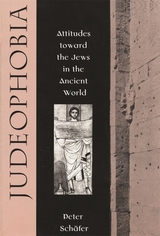
Taking a fresh look at what the Greeks and Romans thought about Jews and Judaism, Peter Schäfer locates the origin of anti-Semitism in the ancient world. Judeophobia firmly establishes Hellenistic Egypt as the generating source of anti-Semitism, with roots extending back into Egypt’s pre-Hellenistic history.
A pattern of ingrained hostility toward an alien culture emerges when Schäfer surveys an illuminating spectrum of comments on Jews and their religion in Greek and Roman writings, focusing on the topics that most interested the pagan classical world: the exodus or, as it was widely interpreted, expulsion from Egypt; the nature of the Jewish god; food restrictions, in particular abstinence from pork; laws relating to the sabbath; the practice of circumcision; and Jewish proselytism. He then probes key incidents, two fierce outbursts of hostility in Egypt: the destruction of a Jewish temple in Elephantine in 410 B.C.E. and the riots in Alexandria in 38 C.E. Asking what fueled these attacks on Jewish communities, the author discovers deep-seated ethnic resentments. It was from Egypt that hatred of Jews, based on allegations of impiety, xenophobia, and misanthropy, was transported first to Syria-Palestine and then to Rome, where it acquired a new element: fear of this small but distinctive community. To the hatred and fear, ingredients of Christian theology were soon added—a mix all too familiar in Western history.

Heroic figures such as Heracles, Perseus, and Jason were seen by the Greeks not as mythical figures but as real people who in a bygone age traveled the world, settled new lands, and left descendants who, generation after generation, could trace their ancestry back to the "time of heroes." From the Homeric age to Byzantium, peoples and nations sharing the same fictive ancestry appealed to their kinship when forging military alliances, settling disputes, or negotiating trade connections. In this intriguing study of the political uses of perceived kinship, Christopher Jones gives us an unparalleled view of mythic belief in action.
Throughout the centuries of Greek preeminence, the Roman Republic and Empire, and into the early Christian era, examples of kinship diplomacy abound. Ancient historians report, for instance, that when the forces of Alexander the Great reached what is now southern Pakistan they encountered a people called the Siboi, whom they judged to be descendants of Heracles. Since Alexander was himself a descendant of the same hero, the invading Macedonians and the Siboi were clearly kinsmen and so parted in peace. Examining the very origins of ancient diplomacy, and kinship as one of its basic constituents, Kinship Diplomacy addresses fundamental questions about communal and national identity and sheds new light on the force of Greek mythic traditions.

Ancient Greeks and Romans often turned to magic to achieve personal goals. Magical rites were seen as a route for direct access to the gods, for material gains as well as spiritual satisfaction. In this fascinating survey of magical beliefs and practices from the sixth century B.C.E. through late antiquity, Fritz Graf sheds new light on ancient religion.
Evidence of widespread belief in the efficacy of magic is pervasive: the contemporaries of Plato and Aristotle placed voodoo dolls on graves in order to harm business rivals or attract lovers. The Twelve Tables of Roman Law forbids the magical transference of crops from one field to another. Graves, wells, and springs throughout the Mediterranean have yielded vast numbers of Greek and Latin curse tablets. And ancient literature abounds with scenes of magic, from necromancy to love spells. Graf explores the important types of magic in Greco-Roman antiquity, describing rites and explaining the theory behind them. And he characterizes the ancient magician: his training and initiation, social status, and presumed connections with the divine world. With trenchant analysis of underlying conceptions and vivid account of illustrative cases, Graf gives a full picture of the practice of magic and its implications. He concludes with an evaluation of the relation of magic to religion. Magic in the Ancient World offers an unusual look at ancient Greek and Roman thought and a new understanding of popular recourse to the supernatural.

In this book Paul Carrick charts the ancient Greek and Roman foundations of Western medical ethics. Surveying 1500 years of pre-Christian medical moral history, Carrick applies insights from ancient medical ethics to developments in contemporary medicine such as advance directives, gene therapy, physician-assisted suicide, abortion, and surrogate motherhood. He discusses such timeless issues as the social status of the physician; attitudes toward dying and death; and the relationship of medicine to philosophy, religion, and popular morality. Opinions of a wide range of ancient thinkers are consulted, including physicians, poets, philosophers, and patients. He also explores the puzzling question of Hippocrates' identity, analyzing not only the Hippocratic Oath but also the Father of Medicine's lesser-known works.
Complete with chapter discussion questions, illustrations, a map, and appendices of ethical codes, Medical Ethics in the Ancient World will be useful in courses on the medical humanities, ancient philosophy, bioethics, comparative cultures, and the history of medicine. Accessible to both professionals and to those with little background in medical philosophy or ancient science, Carrick's book demonstrates that in the ancient world, as in our own postmodern age, physicians, philosophers, and patients embraced a diverse array of perspectives on the most fundamental questions of life and death.
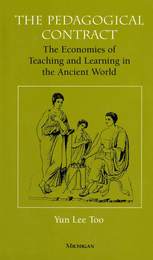
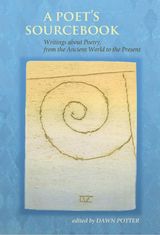
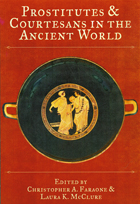
Prostitutes and Courtesans in the Ancient World explores the implications of sex-for-pay across a broad span of time, from ancient Mesopotamia to the early Christian period. In ancient times, although they were socially marginal, prostitutes connected with almost every aspect of daily life. They sat in brothels and walked the streets; they paid taxes and set up dedications in religious sanctuaries; they appeared as characters—sometimes admirable, sometimes despicable—on the comic stage and in the law courts; they lived lavishly, consorting with famous poets and politicians; and they participated in otherwise all-male banquets and drinking parties, where they aroused jealousy among their anxious lovers.
The chapters in this volume examine a wide variety of genres and sources, from legal and religious tracts to the genres of lyric poetry, love elegy, and comic drama to the graffiti scrawled on the walls of ancient Pompeii. These essays reflect the variety and vitality of the debates engendered by the last three decades of research by confronting the ambiguous terms for prostitution in ancient languages, the difficulty of distinguishing the prostitute from the woman who is merely promiscuous or adulterous, the question of whether sacred or temple prostitution actually existed in the ancient Near East and Greece, and the political and social implications of literary representations of prostitutes and courtesans.
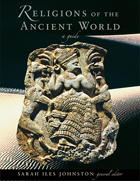
Religious beliefs and practices, which permeated all aspects of life in antiquity, traveled well-worn routes throughout the Mediterranean: itinerant charismatic practitioners journeying from place to place peddled their skills as healers, purifiers, cursers, and initiators; and vessels decorated with illustrations of myths traveled with them. New gods encountered in foreign lands by merchants and conquerors were sometimes taken home to be adapted and adopted. A full understanding of this complex spiritual world unfolds in Religions of the Ancient World, the first basic reference work that collects and organizes available information to offer an expansive, comparative perspective.
At once sweeping in scope and groundbreaking in format, the Guide eschews the usual encyclopedic approach, instead presenting, side by side, materials from ten cultures and traditions. Thus specific beliefs, cults, gods, and ritual practices that arose and developed in Mediterranean religions--of Egypt, Anatolia and the Near East, Mesopotamia, Iran, Greece, and the Roman world, from the third millennium to the fourth century C.E.--are interpreted in comparison with one another, and with reference to aspects that crisscross cultural boundaries, such as Cosmology, Myth, Law and Ethics, and Magic. Written by leading scholars of ancient religion, the essays in this guide sketch the various religious histories, raise central theoretical issues, and examine individual topics such as Sacred Times and Spaces; Prayers, Hymns, Incantations, and Curses; Sin, Pollution, and Purity; Death, the Afterlife, and Other Last Things; Divination and Prophecy; Deities and Demons; and Sacred Texts and Canonicity.
Clearly and stylishly written, grandly illustrated, this comprehensive work welcomes readers as never before into the diversity and interconnections of religion in the ancient world.
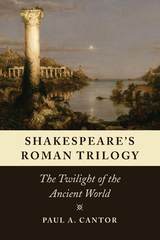
Cantor analyzes the way Shakespeare chronicles the rise and fall of the Roman Republic and the emergence of the Roman Empire. The transformation of the ancient city into a cosmopolitan empire marks the end of the era of civic virtue in antiquity, but it also opens up new spiritual possibilities that Shakespeare correlates with the rise of Christianity and thus the first stirrings of the medieval and the modern worlds.
More broadly, Cantor places Shakespeare’s plays in a long tradition of philosophical speculation about Rome, with special emphasis on Machiavelli and Nietzsche, two thinkers who provide important clues on how to read Shakespeare’s works. In a pathbreaking chapter, he undertakes the first systematic comparison of Shakespeare and Nietzsche on Rome, exploring their central point of contention: Did Christianity corrupt the Roman Empire or was the corruption of the Empire the precondition of the rise of Christianity? Bringing Shakespeare into dialogue with other major thinkers about Rome, Shakespeare’s Roman Trilogy reveals the true profundity of the Roman Plays.
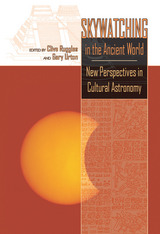
This collection's wide range of outstanding scholarship reveals that cultural astronomy has come into its own. The diverse topics addressed by the contributors include the correlation between Colonial Northern Zapotec and Gregorian calendars, the period of use of the Dresden Codex Venus table and the significance of the Lunar Almanacs that precede it, a new interpretation of an Inka tapestry mantle as a commemorative calendar, temple orientations in Hawai'i and church orientations in Medieval England, and the connection in cultural imagery between astronomers (science) and wizards (magic).
Contributors include: Harvey M. Bricker, Victoria R. Bricker, Edward E. Calnek, Clemency Coggins, John Justeson, Edwin C. Krupp, Stephen C. McCluskey, Susan Milbrath, Clive Ruggles, David Tavárez, Barbara Tedlock, Dennis Tedlock, Gary Urton, and R. Tom Zuidema. Mesoamerican Worlds Series
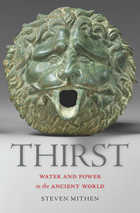
Water is an endangered resource, imperiled by population growth, mega-urbanization, and climate change. Scientists project that by 2050, freshwater shortages will affect 75 percent of the global population. Steven Mithen puts our current crisis in historical context by exploring 10,000 years of humankind’s management of water. Thirst offers cautionary tales of civilizations defeated by the challenges of water control, as well as inspirational stories about how technological ingenuity has sustained communities in hostile environments.
As in his acclaimed, genre-defying After the Ice and The Singing Neanderthals, Mithen blends archaeology, current science, and ancient literature to give us a rich new picture of how our ancestors lived. Since the Neolithic Revolution, people have recognized water as a commodity and source of economic power and have manipulated its flow. History abounds with examples of ambitious water management projects and hydraulic engineering—from the Sumerians, whose mastery of canal building and irrigation led to their status as the first civilization, to the Nabataeans, who created a watery paradise in the desert city of Petra, to the Khmer, who built a massive inland sea at Angkor, visible from space.
As we search for modern solutions to today’s water crises, from the American Southwest to China, Mithen also looks for lessons in the past. He suggests that we follow one of the most unheeded pieces of advice to come down from ancient times. In the words of Li Bing, whose waterworks have irrigated the Sichuan Basin since 256 BC, “Work with nature, not against it.”
READERS
Browse our collection.
PUBLISHERS
See BiblioVault's publisher services.
STUDENT SERVICES
Files for college accessibility offices.
UChicago Accessibility Resources
home | accessibility | search | about | contact us
BiblioVault ® 2001 - 2024
The University of Chicago Press


